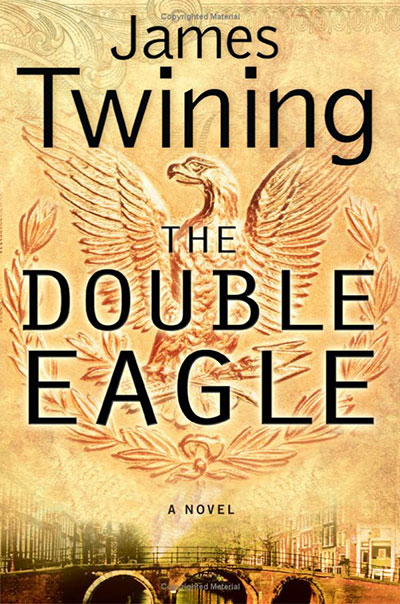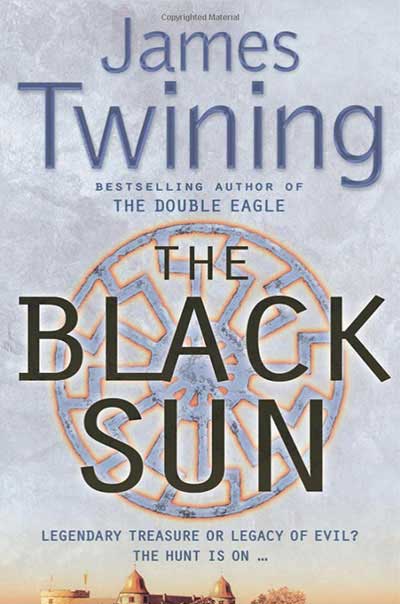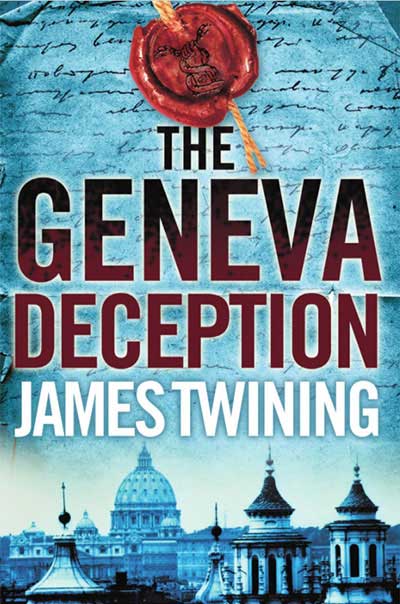The History of the 1933 Double Eagle
July 30, 2002 was a brutal day in Manhattan, flags wilting listlessly in the still heat, the air so thick and wet that it seemed you might be able to chew it. Outside Sotheby’s auction house, a long line of limousines stretched into the distance, their engines idling with the air conditioning on, the exhaust fumes pooling into a choking grey fog.
Unusually, only one item was to be auctioned that night – a legendary $20 gold coin minted in 1933 but never officially released into public circulation. But then little about this coin was usual, from its dramatic theft from the Philadelphia Mint, to its ownership by an Egyptian King, to its eventual seizure in a New York hotel room in an operation that was the culmination of a fifty year investigation by US law enforcement agencies.
Hopes were therefore high that the coin would break the previous world record of $4.1 million paid in August 1999 for an 1804 silver dollar. Certainly the omens were good, the bidding opening at $2.5 million with bidders having had to prove their ability to pay just to qualify for a paddle. But the auctioneers were taking nothing for granted – if the coin’s extraordinary seventy year journey had shown anything, it was its breathtaking flair for the unexpected.
***
1933
It was a journey that could trace its roots back to the Wall Street Crash on October 29, 1929, otherwise known as Black Thursday. For it was on that day that the delirious optimism of the 1920s, the easy-living era of Coolidge Prosperity, rising stock markets and the Charleston gave way to the industrial paralysis, business failure, widespread unemployment and bread lines of the Great Depression.
By 1933, the situation had deteriorated even further. Wall Street was on its knees, having reached its lowest ebb the previous September. Factories stood idle, businesses stagnated, commodity prices dived and vicious dust storms were turning America’s croplands into a vast, sterile desert. Nearly 14 million Americans, a quarter of the country’s work force, were unemployed with no Social Security safety net to fall back on. Aimlessly, they roamed the streets, looking in vain for work.
The Gold Confiscation Act
Franklin D Roosevelt, winner of the November 1932 election, was therefore inaugurated as the 32nd President of a country on the brink of collapse. The nation’s banking system, especially, was teetering on the edge of oblivion with several states, led by Michigan, declaring bank holidays to prevent frenzied “runs” which could bring down healthy as well as weak institutions.
The reason for this lay in America’s reliance, along with most other Western countries, on the Gold Standard. This involved every dollar of currency being backed up by a fixed amount of physical gold held by the government at a set exchange rate. However, with stocks and bonds rendered worthless, the only thing that seemed to have any intrinsic value was gold. People therefore took to hoarding it in huge quantities, nervous depositors and businesses withdrawing funds and even sending vast sums abroad to help see them through the crisis. As the country began to haemorrhage gold, the government soon realised that if it couldn’t staunch the flow, it would fatally undermine the nation’s first tentative steps towards recovery.
One of the newly elected President’s first acts, therefore, was the passing of Presidential Proclamation 2039 on March 6 1933 as part of his famous “100 Days”. This order declared a bank holiday and forbade the payment, hoarding and export of gold. It was followed up on the 5 April by the much more draconian Executive Order 6102 (click here for more information) which required the actual surrender to the Federal government of all privately held gold coins, bullion and certificates. Failure to comply was punishable by a fine or imprisonment. (Incredibly, this Order was only repealed by Congress in 1974.)
Business as usual
The public response to the measures was overwhelming, with some $300 million eventually being turned into the Federal Reserve Bank. And yet, despite the passing of these Orders, later enshrined in the 1934 Gold Reserve Act, the relentless wheels of government bureaucracy continued to turn.
Rather than down tools, the Philadelphia Mint, not having not been instructed otherwise, pursued its normal minting programme and struck some 445,500 Double Eagles between March and May 1933, despite these coins now being effectively illegal to own.
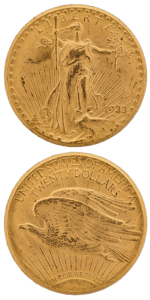
The inevitable consequence was that none of them were ever actually issued to the public, the last shipment of gold coins having left the mint on March 6th. Instead 445,000 1933 Double Eagles were transferred to Mint Vault F, Cage 1 with the remaining 500 coins being set aside for the Assay Commission meeting scheduled for the 14 and 15th February 1934.
The Assay Commission
The Assay Commission was a citizen’s board set up in 1792 to examine the nation’s coins for purity and weight, based on the ancient “Trial of the Pyx.” The Commission destroyed nine out of the five hundred coins in their assay, with another twenty coins destroyed in an internal Mint assay. A further two coins were sent to the Smithsonian to be added to the National Numismatic Collection’s complete record of American coins.
The balance of 469 coins were returned to the Pyx box in the Cashier’s vault at the Mint. Then, in September 1934, all gold coins remaining in the Mint were declared “uncurrent” and eventually, between February 6 and March 18 1937, all 450,469 Double Eagles were finally melted into gold bars.
The Egyptian connection
This was thought to be the end of the matter, until in February 1944 a diplomatic officer of the Royal Legation of Egypt applied for an export license for a 1933 Double Eagle from the Treasury under an exemption to the Roosevelt Executive Order that allowed the export of rare coins.
He was acting on behalf of King Farouk of Egypt, dubbed the “playboy king” and a voracious collector in a wide range of fields including stamps, jewels, art, early razor blades, aspirin bottles and, especially, coins. Using a network of international agents, Farouk had rapidly built up an 8,000 piece collection believed by many to be the greatest private coin collection in the world.
The Treasury sought the guidance of Mint Director Nellie Tayloe Ross who consulted Theodore Belote, the curator of rare coins at The Smithsonian. Belotte rapidly confirmed the coin’s value to collectors but, perhaps because of the presence of two examples in the collection, failed to recognise that the coin had never been regularly issued. A few days later, the coin was on its way to Egypt by diplomatic pouch.
A theft revealed
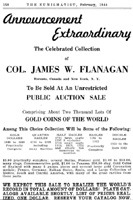
At roughly the same time, Ernest A. Kehr, the stamp and coin columnist for The New York Herald Tribune, noticed that Stack’s, the famous coin house, was selling the “celebrated collection” of Colonel James Flanagan. Among the last lots was a 1933 Double Eagle described in the catalogue as “excessively rare” and “the first one that ever came up in any public auction.”
Intrigued, Kehr approached the Mint, asking them how many 1933 Double Eagles had been released to the public. The answer was categorical: none. But faced with Kehr’s evidence the Mint’s acting director, Leland Howard, had no choice but to notify Frank Wilson, the chief of the Secret Service, that at least one and possible more coins had been stolen from the Mint.
Led by Special Agent Harry W Strang, a powerfully built man with a ruddy, pleasant face, the authorities attended the auction and seized the coin. Further questioning of the seller revealed that he believed that up to eight other coins were circulating in the market although he had no idea where they had come from.
The trail eventually led to Israel Switt of Philadephia’s Jeweler’s Row, a dealer well known to the authorities for violations of the 1934 Gold Reserve Act. Under questioning, he admitted to selling nine coins.
The Four Horsemen
Agent Strang, since joined by the equally dogged George Drescher, moved the focus of their investigation to lower level and former employees of the Philadephia Mint. They quickly uncovered that a small cadre, known as The Four Horsemen, had unofficially “run” the Mint during the thirties. They consisted of one-time foreman of the Weigh Transfer Room, George A. McCann, Assistant Superintendent Ralph Roland, Chief Clerk Fred Chaffin and Assayer Chester “Doc” Ziegler.
The spotlight shifted to McCann. Not only had he had exclusive access to the 469 1933 Double Eagles returned from the February 1934 meeting of the Assay Commission, but investigators soon discovered that McCann’s bank balance had been swollen with a series of payments that his salary alone could not account for.
That wasn’t all. Stories began to surface from some of McCann’s former Mint colleagues about an attempt to hide the theft of $10,000 in scrap gold and even more damning was the fact that McCann had already been arrested and jailed for stealing “uncurrent” silver coins from the Mint.
McCann denied any involvement with the theft but the Secret Service was convinced they had got their man. They bought charges against him and Switt but when Strang took his evidence to the US attorney in Philadelphia, the US Department of Justice said it couldn’t prosecute either of them because the statute of limitations had run out.
But Strang was not to be deterred. With three Double Eagles already seized, he set about recovering the others. A further four were surrendered during the course of 1945 with an eighth won back through the courts in 1947 and a ninth seized in 1952 from the famous collection of Louis Eliasberg, who had the only complete collection of American coins outside of the Smithsonian. And then, in what would today be considered an act of cultural vandalism, all nine coins were melted down.
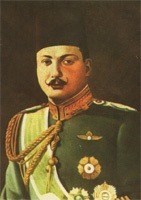
The Farouk sale
But one coin remained at large, resting within King Farouk’s vast coin collection at Koubbeh Palace in Cairo. Although this was well known to Strang and his team, political considerations led the Treasury not to pursue their case, choosing instead to bide their time.
The Egyptian Revolution in 1952 provided the opportunity they had been waiting for. In late 1953 the revolutionary leaders, led by Gamal-Abdel Nasser, decided to auction off Farouk’s collection to help finance their military and social programmes. Sotheby’s was appointed to handle the massive sale of what was officially known as the Palace Collections of Egypt and which was set to last for nine days.
The Double Eagle was included within Lot 185. Alerted to this and under pressure from the Secret Service, the US State Department instructed the American Embassy in Cairo to request the coin’s return. At some stage before the auction, the Egyptians agreed to withdraw the coin from the auction. However, they never turned it over. Instead it simply vanished.
The “lost” years
In the years after the Farouk auction, rumours of sightings of the 1933 Double Eagle regularly circulated amongst the numismatic community. It was reported to have surfaced in first Switzerland and then later France. But they remained rumours, with no firm evidence.
Then, in the early 1990s, a London coin dealer called André de Clermont, developed a relationship with a mysterious Egyptian jeweller who occasionally surfaced in London with rare coins to sell – coins that, de Clermont soon realised, were an uncanny match to remnants of the Farouk collection. Over time it transpired that the jeweller was a family friend of a colonel in Nasser’s army. A coin collector, the colonel had acquired some of Farouk’s unsold holdings after the auction and following his recent death the family was now trying to sell off the coins.
By this stage de Clermont had teamed up with Stephen Fenton, another coin dealer brought in to provide financing and valuation advice. Eventually, after over a year of doing business with the jeweller, they dared to ask him about the 1933 Double Eagle. To their excitement, the jeweller confirmed that the family had the coin. They knew it was valuable, the colonel having kept it in the original envelope from the 1954 auction and marked it “Rare.” However, it seemed that they had not yet decided whether to sell it or not. In de Clermont’s words, “He just said, ‘If it comes, it comes.'”
Back from the dead
And come it did in late Summer 1995. Again according to de Clermont, the jeweller simply called to say he was in town and that he had some coins to sell. When he got to his hotel, the jeweller took out the 1933 Double eagle and said “Here it is.” After much haggling, Fenton bought the coin along with a few others for $220,000, his agreement with de Clermont entitling him to a share of any profits he made on a re-sale.
With the coin in a safety deposit box, Fenton set about selling it on. Given the rarity and value of the piece, Fenton worked through agents to try and find a suitable buyer. One of the people he got in touch with was Jasper Parrino, a dealer based in Kansas City, Missouri. Parrino in turn called Jack Moore, a peripheral figure in the coin world but one who had access to at least one important client.
Moore was also, as it turned out, a government informant, and he immediately contacted the FBI who pointed him in the direction of the Treasury. Their interest was immediate – even after sixty years, they wanted their coin back. Moore agreed to co-operate with them to recover the coin in a sting operation from Parrino’s unnamed source.
So began a long period of haggling, with Moore and Parrino negotiating over the price and payment terms. Eventually a deal was struck. Moore’s so-called client would match the asking price of $1.5 million. But he would only take delivery of the goods in the US. Unless Parrino’s client (i.e. Fenton) was willing to bring the coin over from Europe, there was no deal.
The sting
On February 8, 1996, Stephen Fenton, accompanied by Parrino, met Moore at the Waldorf Astoria hotel in New York. Moore was accompanied by two men, supposedly his buyer and a coin expert but in reality two Secret Service agents. As Fenton handed over the coin for inspection, agents burst into the room, seized the coin and arrested him and Parrino on charges of conspiring to embezzle and convert to their own use property of the United States.
Fenton fought the charges and in April 1996, prosecutors dismissed the criminal complaint. However, the government still had the coin, locked in a vault at 7 World Trade Centre, and had no intention of letting it go. Assistant US attorney Jane Levine bought a forfeiture action against Fenton, eventually adding a claim for title. She had precedent on her side, the earlier 1947 case having established the government’s right to 1933 Double Eagles stolen from the Mint.
The court decides
Fenton’s defence was built around his assertion that his coin was different from any other Double Eagle, by virtue of it having been granted an export license in 1944. His argument was that by giving the export license and then failing to seek the coin’s return for several years after, the government had implicitly acknowledged Farouk’s legal title to the coin.
In the end, after five years of legal to-ing and fro-ing, a Solomonic settlement was reached: neither side would own the coin. Instead it would be auctioned and the proceeds split between the two parties. Fenton would give up his title to the coin, important to the government in case any other Double Eagles surfaced, and they in turn would accept that coin could legally be owned by a private individual.
***
A chilled hush descended over the audience as the bidding started. Although twelve people had qualified for paddles in the end, by the time the coin passed the previous record for a single coin, only two were left – a tall man bidding on behalf of a client on the phone and the head of Sotheby’s books and manuscripts division, bidding on behalf of a client.
At $6.6 million, the bidder with the cell phone dropped out. Auctioneer Redden gave fair warning, before bringing down his gavel with a dramatic flourish. The total price, including the 15% buyer’s premium, came to $7.59 million. The whole sale had lasted only nine minutes.
But, that was not the end of the story. In a final twist, a further cheque for $20 was needed to complete the sale. In exchange, the Treasury issued an official Certificate of Transfer, the only one ever issued for a 1933 Double Eagle. It officially turned the coin from a gold disc into legal US tender.
Finally, after seventy years on the run, its journey was over.
Notes:
1. Today, the Farouk Double Eagle is on display at the Federal Reserve Bank near Ground Zero.
2. To learn more about the design of the Double Eagle, click here

